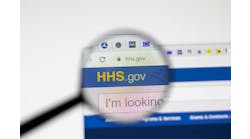Blockchain technology can safeguard electronic health records, trace pharmaceuticals, and track clinical trial data, but few developers are building prototypes for this potentially lucrative field, according to Emily Vaughn, blockchain product director at Change Healthcare, a healthcare technology company.
That’s because healthcare is a cautious industry. It’s highly regulated, and any changes to the way things are done are typically proven in other industries before they can be applied to anything that could affect human health.
There are plenty of obstacles to blockchain’s acceptance. “There’s skepticism around blockchain’s scalability and security,” Vaughn tells ThirtyK. Many healthcare providers, payers, pharmaceutical companies, and regulators have only a nodding acquaintance with blockchain, and there are few applications in use.
Overcoming this chicken-and-egg scenario requires more user education and “fully developed applications and development tools that make it easier to interact with blockchain networks,” she says. A regulatory nod of approval would help, too.
Further slowing adoption, the U.S. healthcare system is distributed, with many different providers and payers, each with their own technology preferences.
“The biggest obstacle to using blockchain in healthcare is the lack of data sharing,” Melanie Nuce, blockchain expert and senior vice president of corporate development for the information standards organization GS1 US, tells ThirtyK. At a patient level, for instance, electronic health records (EHRs) may not be compatible with EHR technology in other healthcare systems. At a pharmaceutical level, it still can be hard to quickly and accurately trace ingredients, manufactured lots, and individual doses through development, manufacturing, and delivery.
This is particularly pertinent given the requirements to track and trace pharmaceuticals at the lot, pallet, case and individual-package levels. In the supply chain, “many (healthcare vendors) maintain proprietary product identification numbers and closed-loop data management systems that aren’t compatible with their supply chain partners’ systems,” she explains. That makes it harder to track recalled products and prevent them from reaching patients.
The Mayo Clinic is one of the leaders pushing blockchain adoption. Working with Medicalchain, a London blockchain technology startup, it is developing blockchain-protected EHRs, as well as apps to help medical educators track their impact in the medical community.
Meanwhile, some startups are trying to get patients to upload their data onto the blockchain. For example, Embleema wants to pay them cryptocurrency for doing so and allow them to choose whether to share their anonymized data with researchers.
On the business side, Change Healthcare’s claims transparency solution lets healthcare providers track the lifecycle of an insurance claim directly from a blockchain without needing their own node infrastructure. This eases scalability and security concerns, showing that “blockchains can meet the transactional demands for healthcare,” Vaughn says.
A recent IDC report predicts movement, saying that by 2020 one in five healthcare organizations will be “using blockchain for operations management and identity.”
For her part, Vaughn predicts that “widespread adoption of blockchain in healthcare could catalyze in the next five years and stabilize in the next 10 years. Adoption for business-to-business transactions may come much sooner.”

